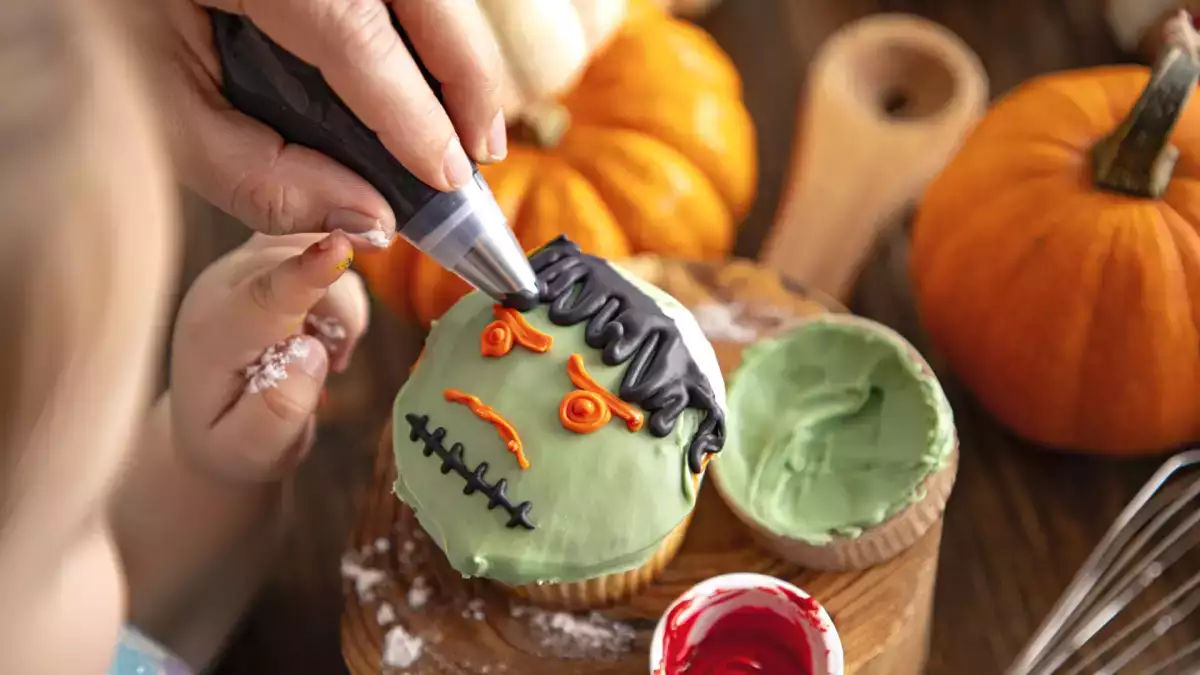Want those bold Halloween dessert colors? Avoid these 4 common food coloring disasters

Every October, with the arrival of Halloween, the kitchen becomes a small laboratory of domestic alchemy. We mix flour and butter in the hope that a few drops of coloring will transform a simple sponge cake into an orange pumpkin or a cookie into a blue specter. We do it for the children, we say; but, if we are honest, we also do it for us: for the magic of seeing how something as ordinary as a cake becomes extraordinary.
And yet, every year the same thing happens. The frosting is cut, the color fades, the dough turns an undefined shade between brown and gray. What was supposed to be a radiant pumpkin ends up looking like mud. It's not bad luck: it's chemistry taking its toll.
For years I thought it was enough to add a few more drops of colorant to fix it. That the red was not red enough because it lacked the will. Until I understood that the result did not depend on my genuine enthusiasm, but on knowledge. Food coloring, like everything that seems simple, has its own rules and it is important to understand them.
1. Choose any colorant, without looking at its shape.
The first rule is also the most ignored: not all colorants are the same, much less universal. There are liquid, gel, powder or liposoluble colorants, and each one behaves differently.
- A liquid colorant in a fatty mass (such as a sponge cake with butter or custard) is like water on oil: it separates and does not stain well. In these cases, the best are gel or powder colorants, which are easily integrated in dense mixtures or with sugar.
- If you want to dye chocolate, butter or toppings, choose a fat-soluble colorant, the only one that really dissolves in fat. It is the one that achieves that bright orange or intense black that does not cut or lose brightness.
- On the other hand, for meringues, icings or light doughs, a few drops of liquid or gel coloring are enough, which spread easily without altering the texture.
When I understood it, I saw it clearly: each mixture has its own language, and the right colorant is the one that knows how to speak to it in its own language.
2. Forgetting that color has memory (and that heat erases it).
There is nothing more frustrating than taking out of the oven a cake that promised to be pumpkin orange and finding it toasted and lifeless. The fault lies not with the oven, but with chemistry: some pigments cannot withstand heat or acidity; others, when exposed to light, fade.
Color, in baking, is as sensitive an ingredient as meringue: it changes with temperature, pH and baking time.
Before dyeing the whole dough, do a small test. Take a spoonful, bake it for a few minutes and see how the color reacts with the actual heat. If it dulls, add a little more pigment or choose a more stable shade, such as gel or powdered.
And if your dough contains lemon, yogurt or cocoa, keep this in mind: the acidity alters the pH and can turn red or purple tones brown. In such cases, reinforce the color or use more heat-resistant pigments, such as gel or powder pigments.
3. Ignore how the color reacts with the other ingredients.
Color never acts alone: it reacts with everything around it. Sugar softens it, fats dull it and acids make it unstable.
In doughs with butter or cream, the tone lightens; in creams with lemon or orange juice, it fades. If you are looking for intense colors, preferably powder or gel, add the pigment at the end, with the dough already bound, and mix with a silicone spatula until it is uniform.
And, above all, add the colorant little by little. Experienced confectioners work with color like a perfume: one drop too much, and everything changes.
4. Believing that more color means better results
This is perhaps the most human error of all. In cooking, as in enthusiasm, we tend to confuse intensity with accuracy.
Adding more color seems like the quickest way to make something stand out, but too much can end up backfiring: Too much pigment upsets the balance of the recipe. Liquid colorants can contribute more water than necessary and change the texture of the batter or frosting; gel concentrates, if added in excess, leave a metallic or bitter taste. In addition, too much color reduces the stability of the emulsion: the glaze loses gloss and the toppings harden earlier.
Other common errors
Even with the right colorant, there are oversights that can spoil the result:
-Not respecting the temperature: color is sensitive to heat and cold: if the mixture is hot, the pigment degrades; if it is too cold, it does not integrate. Always tint when it is lukewarm or at room temperature.
- Adding it at the wrong time: If it is incorporated at the beginning, it loses strength during mixing. Do it at the end, with the dough already homogeneous, and adjust the tone little by little.
-Not mixing well: Insufficient mixing leaves streaks or lighter areas. Use a silicone spatula and mix until the color is uniform, also at the bottom of the bowl.
Beyond color
In the end, using food coloring is no different from learning to cook in general: we all start out playing and end up understanding that behind the playfulness there is science, proportion and time. Mistakes (those grayish cupcakes or the faded Frankenstein green frosting) are not failures, but lessons in patience. There is something humbling about acknowledging it: it's not enough to want to. In baking, as in life, there are mixes that just don't work.
Maybe that's why we like Halloween so much: because it's not a competition for the brightest orange, but an opportunity to learn by playing, improve and enjoy, regardless of the outcome. That, and no other, is the real spell.
 Patricia González
Patricia González
Comments